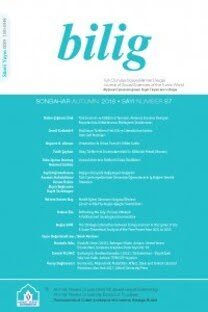Competing discourses in the classroom: Turkish instruction in Berlin
Competing discourses in the classroom: Turkish instruction in Berlin
Berlin’de Türkçe eğitimi 1980’lerde, okul çağına gelen göçmen çocuklarının sayısının artmasıyla birlikte başlamıştır. Türk nüfusun yoğun olduğu mahallelerde bulunan çeşitli düzeydeki okullarda Türkçe seçmeli dil dersi olarak günümüze kadar okutulagelmiştir. Bunun yanında, bazı okullarda orta öğretim bitirme sınavları (MSA) ve üniversiteye hazırlık programlarında (Abitur) Türkçe diğer yabancı dillerle birlikte alan seçeneklerinden birini oluşturmaktadır. Bu makalede Kreuzberg semtinde bulunan ve nüfusunun büyük bir bölümünü Türk kökenli öğrencilerin oluşturduğu bir lisenin 9. sınıf Türkçe derslerinde yapılan etnografik bir araştırmaya yer verilmektedir. Makalenin hedefi söz konusu derslerde öne çıkan iki temel söylemi incelemektir: standart Türkçe söylemi ve Osmanlı Türkçesi söylemi. Bu söylemlerin sınıfta nasıl oluşturulup kullanıldığı mikroetnografik bir analiz yöntemi aracılığıyla gösterilmektedir.
___
- Backus, Ad. (1996). Two in one: Bilingual speech of Turkish immigrants in the Netherlands. Tilburg: Tilburg University Press.
- _____, Jens Normann Jørgensen and Carol W. Pfaff (2010). “Linguistic effects of immigration: Language choice, codeswitching and change in Western European Turkish”. Language and Linguistics Compass 4 (7): 481-495.
- Beck, Eric (1999). Language rights and Turkish children in Germany. Patterns of Prejudice 33 (2): 3-12.
- Bernard, H. Russell (2006). Research methods in anthropology: Qualitative and quantitative approaches. (4th edition). Oxford: Altamira Press.
- Blackledge, Adrian and Angela Creese (2010). Multilingualism: A critical perspective. London: Continuum.
- Blommaert, Jan (1999). State ideology and language in Tanzania. Rüdiger Köppe Verlag, Cologne, Germany.
- _____, (2005). Discourse. Cambridge: CUP.
- Bloome, David, Stephanie P, Carter, Beth M. Christian, Sheila Otto and Shuart- Faris, Nora (2005). Discourse analysis and the study of classroom language and literacy events. Mahwah, NJ: Lawrence Erlbaum Associates.
- Bourdieu, Pierre (1991). Language and symbolic power. (G. Raymond & M. Adamson, Trans). Cambridge, MA: Harvard University Press.
- Bucholtz, Mary (2001). “The whiteness of nerds: Superstandard English and racial markedness”. Journal of Linguistic Anthropology 11: 84-100.
- Çağlar, Ayşe (2001). “Constraining metaphors and the transnationalisation of spaces in Berlin”. Journal of Ethnic and Migration Studies 27: 601-613.
- Chin, Rita (2007). The guest worker question in postwar Germany. Cambridge: Cambridge University Press.
- Crul, Maurice and Hans Vermeulen (2003). “The second generation in Europe”. International Migration Review 37 (4): 965-986.
- Duff, Patricia A. (2002). “The discursive co-construction of knowledge, identity, and difference: An ethnography of communication in the high school mainstream”. Applied Linguistics 23: 289-322.
- Eckert, Penny (2000). Linguistic variation as social practice: The linguistic construction of identity in Belten High. Blackwell Publishers, Malden, MA.
- Extra, Guus, Kutlay Yağmur and Tim van der Avoird (2004). “Methodological considerations”. Urban multilingualism in Europe: Immigrant minority languages at home and school. Ed. G. Extra & K. Yağmur. Clevedon, United Kingdom: Multilingual Matters. 109-132.
- Gutiérrez, Kris, Patricia Baquedaño-López and Carlos Tejeda (1999). “Rethinking diversity: Hybridity and hybrid language practices in the third space”. Mind, Culture, and Activity: An International Journal 6: 286-303.
- Heller, Monica (1999). Linguistic minorities and modernity: A sociolinguistic ethnography. London: Longman.
- Heller, Monica and Marilyn Martin-Jones (2001). Voices of authority: Education and linguistic difference. London: Ablex Publishing.
- Hinnenkamp, Volker (2003). “Mixed language varieties of migrant adolescents and the discourse of hybridity”. Journal of Multilingual and Multicultural Development 24: 12-30.
- Jaspers, Jurgen (2005). “Linguistic sabotage in a context of monolingualism and standardization”. Language and Communication 25: 279-297.
- Lytra, Vally (2007). Play frames and social identities. Contact encounters in a Greek primary school. Pragmatics and Beyond New Series, Benjamins.
- Mandel, Ruth (2008). Cosmopolitan anxieties: Turkish challenges to citizenship and belonging in Germany. Duke University Press.
- McNamara, Tim (2012). “Poststructuralism and its Challenges for Applied Lin- guistics”. Applied Linguistics 33 (5): 473-482.
- Pfaff, Carol W. (2000). “Development and use of et- and yap- by Turkish/German bilingual children”. Studies on Turkish and Turkic languages, Proceedings of the Ninth International Conference on Turkish Linguistics. Ed. Göksel, Asli and Celia Kersleke.
- _____, (2010). “Multilingual development in Germany in the crossfire of ideology and politics”. Perspectives in Politics and Discourse. Ed. U. Okulska, and P. Cap. Amsterdam: John Benjamins. 328-357.
- Portes, Alejandro and Min Zhou (1993). “The new second generation: Seg- mented assimilation and its variants”. The Annals 530: 74-96.
- Rampton, Ben (2006). Language in late modernity: Interaction in an urban school. Cambridge: Cambridge University Press.
- Ricento, Thomas (Ed.) (2000). Ideology, politics and language policies: Focus on English. Amsterdam: John Benjamins.
- Schroeder, Christoph (2003). “Der Turkischunterricht in Deutschland und seine Sprache(n)”. Zeitschrift fur Fremdsprachenforschung 4 (1): 23-39.
- _____, (2006). “Hangi Türkçe? Anadili ve yabancı dil olarak Türkçe ve Batı Avrupa’da Türkçe eğitimi Türkiye’de dil tartışmaları. Ed. Astrid Menz & Christoph Schroeder. Istanbul: Istanbul Bilgi University Publications. 209-228.
- Sezer, Engin (1986). “An autosegmental analysis of compensatory lenghtening in Turkish". Studies in compensatory lengthening. Ed. W. Leo Wetzels and Engin Sezer. Dordrecht: Foris Publications. 227-250.
- Söhn, Janina and Veysel Özcan (2006). “The educational attainment of Turkish migrants in Germany”. Turkish Studies 7(1): 101–124.
- Vertovec, Steve (2007). “Super-diversity and its implications”. Ethnic and Racial Studies 30(6): 1024-1054.
- Van der Hulst, Harry and Jeroen van de Weijer (1991). “Topics in Turkish phonology”. Turkish Linguistics Today. Ed. Hendrick Boeschoten and Ludo Verhoeven. Leiden: Brill Academic Publishing.
- Wei, Li (2008). “Research perspectives on bilingualism and bilingual education”. Encyclopaedia of Language and Education. V. 10. Ed. K.A. King and N.H. Hornberger. London: Springer. 137-150.
- Yağmur, Kutlay and Fons J. R. van de Vijver (2011), “Acculturation and language orientations of Turkish immigrants in Australia, France, Germany, and the Netherlands”. Journal of Cross-Cultural Psychology 43 (7): 1110-1130.
- Yurdakul, Gökçe (2006). “State, political parties and immigrant elites: Turkish immigrant associations in Berlin”. Journal of Ethnic and Migration Studies 32: 435-453.
- ISSN: 1301-0549
- Yayın Aralığı: 4
- Başlangıç: 1996
- Yayıncı: Ahmet Yesevi Üniversitesi Mütevelli Heyet Başkanlığı
